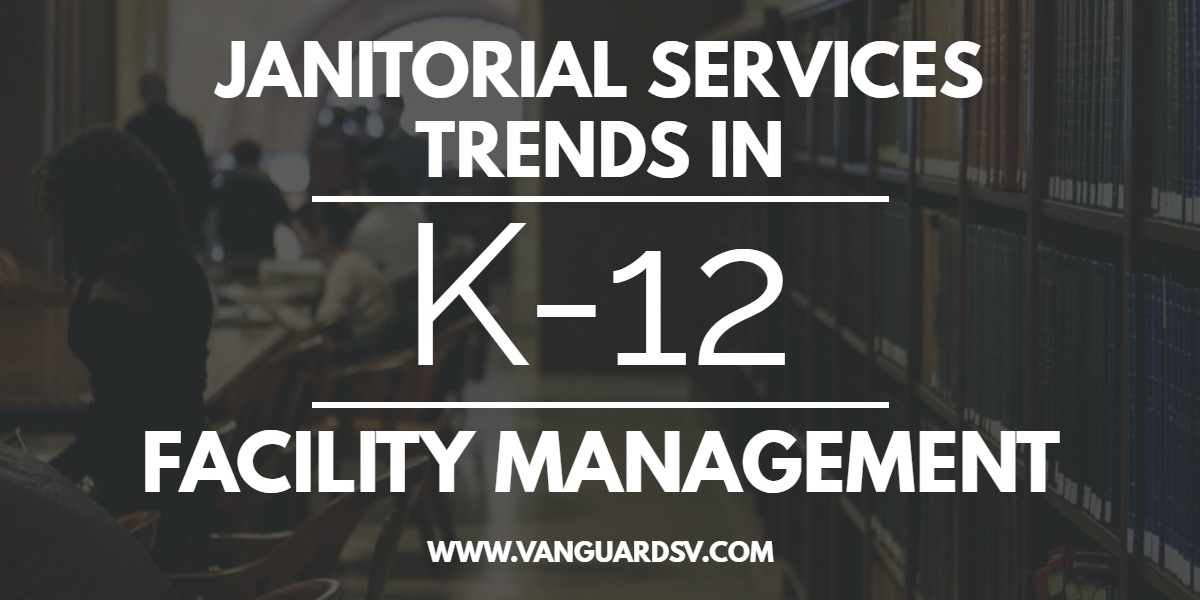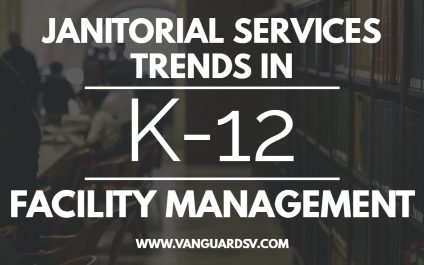Technological advancements are changing the face of modern educational facilities, including a better understanding of the role janitorial services plays in maintaining a safe and healthy learning environment.

Janitorial Services Trends in Educational Facilities Management Practices
Modern school design and management practices are realigning with recent discoveries made through scientific and medical research that draws a picture of an entirely different environment than the one we students currently learn in.
- Smaller classroom sizes and alternative learning methods mean facility managers will need to manage space resources more efficiently.
- Shared technology resources translate into higher rates of germ and bacteria transfer.
- Increased use of technology in the classroom will require specialized equipment and training to sanitize sensitive electronics without damaging the systems, and;
- The adoption of sustainable practices, which are likely to be ordered by the State shortly for all public schools, will require a restructuring of current policies, training, product purchasing, and lifecycle management.
Small Classrooms and Space Management
More and more we have observed the issues with packed classrooms, both regarding student health and performance, as well as instructor time per student and absenteeism.
As school administrators confront the mass migration of students, from traditional to online curriculums, classroom size will begin to shrink to more manageable numbers for teachers.
However, fewer students translate into less income for the school, unless they can find a way to manage the, now open, space resources available.
Often these spaces are converted into learning labs or storage areas, which can present unique cleaning and maintenance challenges, such as:
- Ensuring sustainable practices are applied to resource storage, use, and return.
- Safely sanitizing lab equipment after use, and;
- Ensuring the converted use of the building aligns with health and safety codes to avoid exposure to VOC's and other airborne toxins common in converted or refurbished rooms/buildings.
See Also:
Shared Technology Resources and Germs
The spread of germs and bacteria in schools is no surprise, but no small issue either.
Computer labs are resplendent with high-contact surfaces considered significant germ hotspots in any environment, including:
- Mice
- Keyboards
- Tablets
- Smartphones
- Touchscreen computers, and;
- The space on the desk where you rest your hand that typically operates a mouse.
Each of these locations has, in one study or another, been identified as containing more microbial matter, typically unhealthy bacteria counts, well more than the average public toilet seat.
Ensuring the productive use, care, and availability of these systems is paramount to the institution's future success, so the adoption of advanced cleaning technologies, such as electrostatic cleaning appliances, should be adopted to reduce the time necessary to properly sanitize equipment and occupied spaces while ensuring the health and safety of occupants.
See Also:
Sustainability
The continued adoption of sustainable and green business practices by State and Federal agencies means that the same requirements will likely be enforced in publicly funded schools in the very near future.
This will require a complete restructuring of how cleaning is done, including:
- Green product purchasing and full lifecycle tracking and management.
- The implementation of CMMS applications combined with IoT devices to reduce management and labor overhead while ensuring the optimal performance of equipment and systems.
- A refocusing of cleaning strategies to ensure new sunlight facing windows and improved HVAC systems meet optimal standards for students and teachers.
- Implementation of recycling, especially organic waste, and;
- Necessary local community outreach programs and representatives for the purposes of acquiring relevant input and partnerships.
See Also:
Takeaway
As schools modernize their infrastructure and parents seek alternative learning venues for students, districts are migrating away from traditional practices towards more profitable and sustainable methods that focus on occupant health and performance.
To achieve this, a significant update to the products, practices, and chemicals that are employed to clean the schools, inside and out, will need to be established, as well as the management of the full product lifecycle to ensure purchasing is completed through sustainable vendors and reusable materials are returned, recycled, or repurposed to avoid contributing further to landfill waste.
Finally, an adjustment will need to be made by students, faculty, and office administrators to ensure each person understands the importance of their roles, from hand hygiene to responsible product use and disposal.
If you would like to learn more about the advantages of outsourced janitorial services and facilities maintenance for your school, contact us today for a free quote!
In Bakersfield CA, call (661) 437-3253
In Fresno CA, call (559) 206-1059
In Valencia CA, or Santa Clarita CA, call (661) 437-3253

